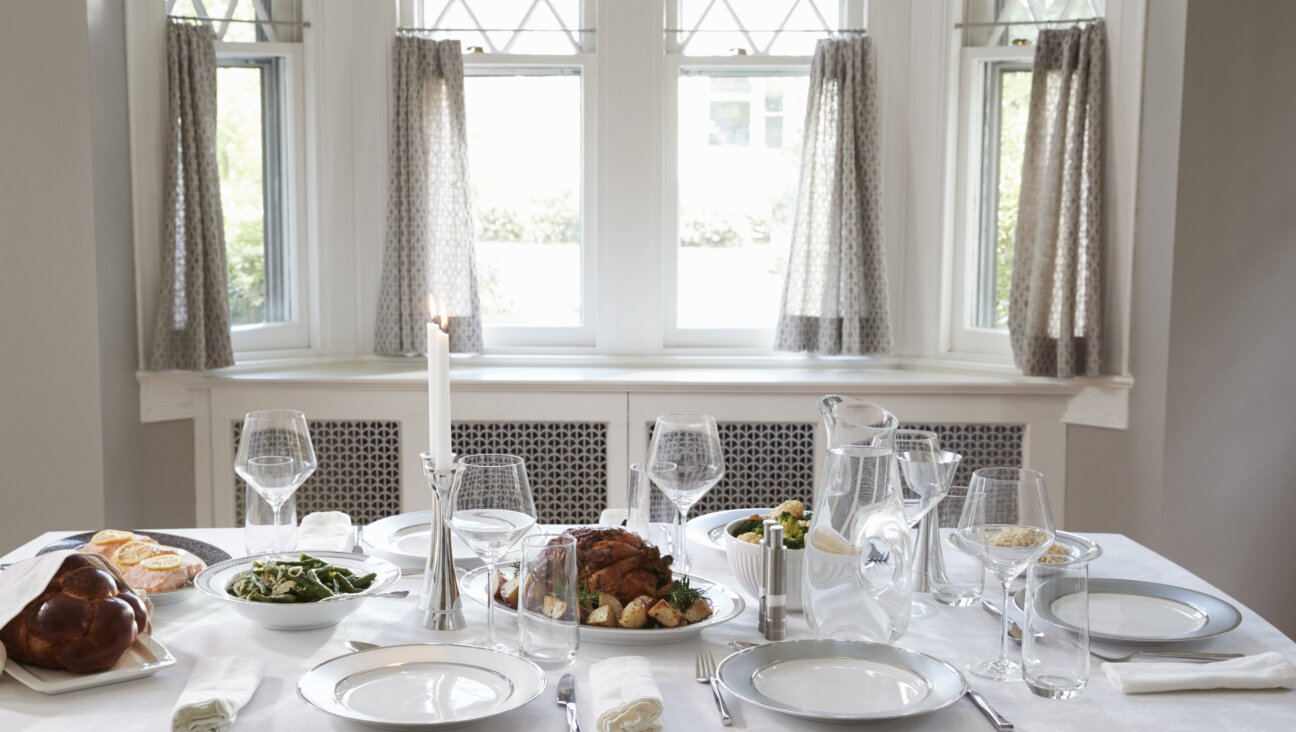Beyond Falafel
With early spring sunlight spilling through the windows, chef and baker Erez Komarovsky is hard at work. Using quick, sure movements, he slices tart green almonds and then stirs them into goat’s milk yogurt. An oversized mortar and pestle on the counter holds lima bean hummus, which he has topped with toasted peanuts and sautéed leeks, ready to be slathered onto his sesame seed encrusted challah.
Komarovsky is in his teaching kitchen — an elegant space tucked away in the bottom floor of his home in the upper Galilee, from which he leads cooking workshops. (He formerly founded and ran the popular artisanal bakery chain Lechem Erez.) The view beyond his “classroom” includes endless green hills and the terraced expanse of his backyard garden. Paired with the bottles of olive oil lining the windowsill, and the freshly picked herbs scattered across the counter, this enclave could easily be situated in Tuscany or Napa — and yet, something about it feels unmistakably Israeli.
Komarovsky is one of a growing number of chefs, farmers, cheese and wine makers, and food writers who, for the past two decades, have collectively begun to define the boundaries of Israeli cuisine. Their task is simultaneously obvious and impossible. On the one hand, Israel is home to rich agricultural and ethnic traditions, vibrant produce markets and many family-owned eateries. And it has done a remarkable job of transforming regional dishes like hummus and falafel into national obsessions. Still, trying to define the cuisine of a 62-year-old country largely populated by recent immigrants feels premature.
The world’s established cuisines evolved over many centuries, steadily growing more nuanced and rooted in the intricacies of people and place. In contrast, “Israeli cuisine is like somebody moving into a new house and moving his furniture all the time because he doesn’t know how it fits,” said renowned Israeli cheese maker Shai Seltzer in Joan Nathan’s “The Foods of Israel Today” (Knopf, 2001). He claims that “it will take another four generations to make a true Israeli food.”
The country’s first residents were focused on survival, and did not have the resources or luxury to even consider a culinary identity. They brought their myriad Diaspora food cultures with them — Polish and Libyan, Yemenite and Hungarian — but until recently, those traditional foods were largely viewed as unsophisticated and undesirable. “I was completely embarrassed by my mother’s [Bukharian] cooking,” said Israel Aharoni, who opened the country’s first Chinese restaurant in the 1980s and is arguably Israel’s most popular televised chef.
After centuries of physical separation from Israel’s landscape, the settlers’ connection with regional recipes and ingredients was also tenuous. Olive oil, for example, was not part of the early Jewish-Israeli diet, despite the olive tree’s iconic tie to the region. (It was, however, an important part of Arab residents’ diets.) Even when Jewish residents first started to embrace olive oil some 25 years ago, it was mostly imported from Italy, Spain and other Mediterranean countries. “Olive oil had to come to Israel through the back door, which is absurd,” Aharoni said.
Despite the slow start, Israeli food culture has made remarkable strides. “In less than 30 years, Israeli society has graduated from Spartan austerity to a true gastronomic heaven,” Janna Gur wrote in her influential cookbook, “The Book of New Israeli Food: A Culinary Journey” (Schocken, 2007).
The change began with a growing appreciation for fine dining and restaurant culture — largely a result of soldiers returning from post-army travels inspired by the new foods they had encountered. Aspiring young chefs also traveled to Europe, Asia and the Americas, gaining new techniques and a taste for international dishes, like foie gras and sushi.
But over the past decade, Israelis’ growing interest in food has turned inward. “I studied in France and Mexico and Japan, but eventually realized [that those cuisines are] not mine,” Komarovsky said. Part of the dissonance, he said, was stylistic. “Israeli cooking is intuitive, fast and a little arrogant, like Israelis themselves,” he said. Whereas many of the world’s haute cuisines place an emphasis on high concept and technique, “Israeli food starts in the belly, not the mind.”
“Mama cooking,” too — the traditional, ethnic recipes that were once a source of embarrassment — is now considered to be one of Israel’s greatest culinary assets. Innovative young chefs like Meir Adoni of Catit Restaurant and Rafi Cohen of Raphael, both in Tel Aviv, cite their Moroccan heritage as major inspirations. Chef Moshe Basson of the renowned Eucalyptus restaurant in Jerusalem also makes a point of saying he learned both recipes and gained his love of indigenous herbs and plants at the “school of GMG” (grandmothers, mothers and grandfathers).
Locally produced ingredients with distinctively Middle Eastern flavors — olive oil and bulgur wheat, pomegranate, silan (date honey) and sesame, za’atar (a lemony spice blend) fresh herbs, boutique cheeses and wine — have also become fixtures of home cooking and restaurant menus. Komarovsky believes that as in America, where Louisiana’s Creole cooking looks very different from New England’s rustic fare, Israelis’ attention will soon turn to “regional cuisines” and to the distinct contributions that different parts of the country, with their diverse landscapes and people, can make. “Only a few people are talking about regional cuisine right now, but mark my words, it will be the next big thing,” he said.
With less than a century under its belt, Seltzer’s assertion that Israel is too young to boast an identifiable cuisine still resonates. But it is an exciting culinary moment nonetheless. Throughout the country, there is a palpable sense of creativity and innovation, as well as a rediscovery of heritage. As Basson put it one afternoon, while he foraged for wild herbs in a Jerusalem park, “[Together, we are] doing for cuisine what Ben Yehuda did for language.”
Below, a slideshow of photos highlighting Israel’s burgeoning food culture. Click a photo to read its caption.
Leah Koenig writes a monthly column for The Forward on food and culinary trends. Contact her at [email protected]
















